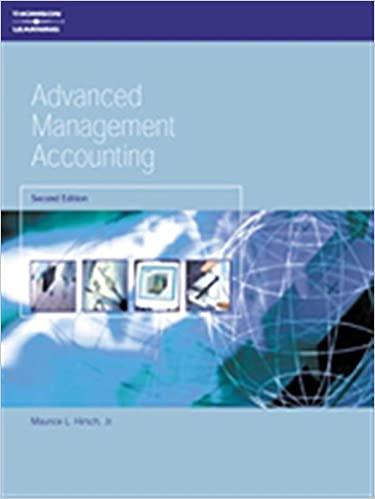

ipital Assets Your Perspective FINANCIAL REPORTING AND ANALYSIS Financial Reporting Problem BYP10-1 Refer to the financial statements and the Notes to Consolidated Financial Statements for The Second Cup Ltd., which are reproduced in Appendix A. Notice that The Second Cup uses the term "depreciation," rather than amortization, for its tangible capital assets. Instructions Answer the following questions: (a) What were the following amounts for the company's capital assets at June 24, 2000: (1) the cost, (2) the accumulated depreciation, and (3) the net book value? (b) What was the amount of capital assets that was purchased during the 2000 fiscal year? (c) What was the amount received from the disposal of capital assets in 2000? What was the net book value of the capital assets that were disposed of during 2000? (d) What method of depreciation and amortization is used by The Second Cup for financial report- ing purposes? (e) What expected useful life was used for calculating the depreciation on the equipment, furni- ture, fixtures, and other? (f) Identify the primary source of the goodwill that is reported by The Second Cup Ltd. ning Your Perspective FINANCIAL REPORTING AND ANALYSIS al market share Financial Reporting Problem BYP14-1 The shareholders' equity section for The Second Cup Ltd. is shown in the Consoli dated Balance Sheets in Appendix A. You will also find data related to this problem in the notes o the financial statements. Instructions Answer the following questions: (a) Does The Second Cup have preferred shares? If so, how many preferred shares is the company authorized to issue? How many shares were issued at June 24, 2000? (b) What was the average issue price of the common shares as at June 24, 2000, and June 30, 19992 (c) Did The Second Cup repurchase any shares in fiscal 2000? Fiscal 1999? If so, identify how many shares and at what amount. (d) Calculate The Second Cup's return on equity for fiscal 1999, using its pro forma 1999 results Shareholders' equity at June 27, 1998, was $10,950,000. How does this compare to the 2000 return on equity calculated for The Second Cup in Illustration 14-10 in the chapter? (e) Calculate the book value per share for fiscal 1999 (use The Second Cup's pro forma 1999 results). How has the book value changed from fiscal 1999 to 2000 (see the 2000 book value cal- culated for The Second Cup in Illustration 14-11 in the chapter). ipital Assets Your Perspective FINANCIAL REPORTING AND ANALYSIS Financial Reporting Problem BYP10-1 Refer to the financial statements and the Notes to Consolidated Financial Statements for The Second Cup Ltd., which are reproduced in Appendix A. Notice that The Second Cup uses the term "depreciation," rather than amortization, for its tangible capital assets. Instructions Answer the following questions: (a) What were the following amounts for the company's capital assets at June 24, 2000: (1) the cost, (2) the accumulated depreciation, and (3) the net book value? (b) What was the amount of capital assets that was purchased during the 2000 fiscal year? (c) What was the amount received from the disposal of capital assets in 2000? What was the net book value of the capital assets that were disposed of during 2000? (d) What method of depreciation and amortization is used by The Second Cup for financial report- ing purposes? (e) What expected useful life was used for calculating the depreciation on the equipment, furni- ture, fixtures, and other? (f) Identify the primary source of the goodwill that is reported by The Second Cup Ltd. ning Your Perspective FINANCIAL REPORTING AND ANALYSIS al market share Financial Reporting Problem BYP14-1 The shareholders' equity section for The Second Cup Ltd. is shown in the Consoli dated Balance Sheets in Appendix A. You will also find data related to this problem in the notes o the financial statements. Instructions Answer the following questions: (a) Does The Second Cup have preferred shares? If so, how many preferred shares is the company authorized to issue? How many shares were issued at June 24, 2000? (b) What was the average issue price of the common shares as at June 24, 2000, and June 30, 19992 (c) Did The Second Cup repurchase any shares in fiscal 2000? Fiscal 1999? If so, identify how many shares and at what amount. (d) Calculate The Second Cup's return on equity for fiscal 1999, using its pro forma 1999 results Shareholders' equity at June 27, 1998, was $10,950,000. How does this compare to the 2000 return on equity calculated for The Second Cup in Illustration 14-10 in the chapter? (e) Calculate the book value per share for fiscal 1999 (use The Second Cup's pro forma 1999 results). How has the book value changed from fiscal 1999 to 2000 (see the 2000 book value cal- culated for The Second Cup in Illustration 14-11 in the chapter)








